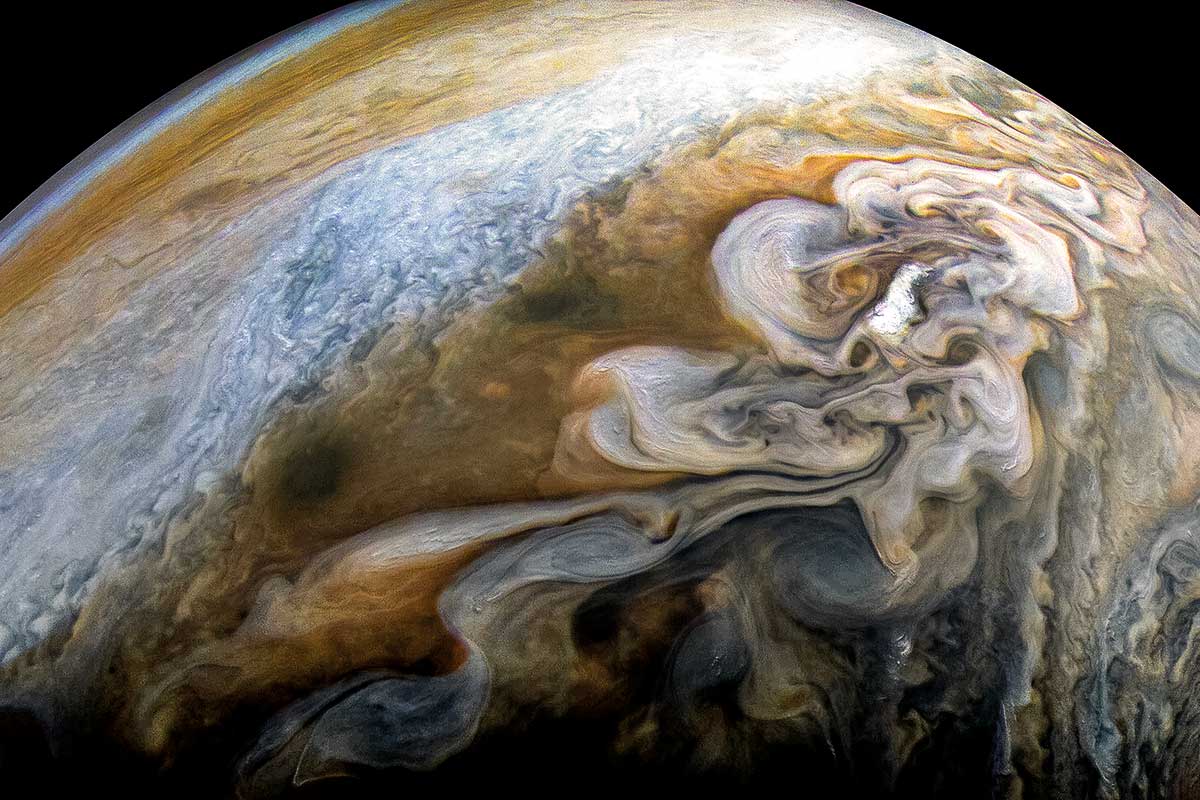
Stunning footage captured by NASA’s Juno probe has been released as it reaches the halfway point of its mission to explore Jupiter.
The incredible images show whirlpools of clouds above the planet as it completes its 16th pass of the gas giant.
Juno is in a highly-elliptical 53-day orbit around the planet and has given us our best glimpse yet of Jupiter’s fascinating atmospheric processes.
The craft’s science instruments probe beneath the planet’s obscuring cloud cover and study Jupiter’s aurora, helping us to understand the planet’s origins, interior structure, atmosphere and magnetosphere.
‘With our 16th science flyby, we will have complete global coverage of Jupiter, albeit at coarse resolution, with polar passes separated by 22.5 degrees of longitude,’ said Jack Connerney, Juno deputy principal investigator from the Space Research Corporation in Annapolis, Maryland.
‘Over the second half of our prime mission — science flybys 17 through 32 — we will split the difference, flying exactly halfway between each previous orbit.
‘This will provide coverage of the planet every 11.25 degrees of longitude, providing a more detailed picture of what makes the whole of Jupiter tick’, he said.
The Juno probe reached Jupiter on July 4, 2016, after a five-year, 1.8 billion-mile (2.8bn km) journey from Earth.
Following a successful braking manoeuvre, it entered into a long polar orbit flying to within 3,100 miles (5,000 km) of the planet’s swirling cloud tops.
‘We have already rewritten the textbooks on how Jupiter’s atmosphere works, and on the complexity and asymmetry of its magnetic field,’ said Scott Bolton, principal investigator of Juno, from the Southwest Research Institute in San Antonio.
‘The second half should provide the detail that we can use to refine our understanding of the depth of Jupiter’s zonal winds, the generation of its magnetic field, and the structure and evolution of its interior.’
No previous spacecraft has orbited so close to Jupiter, although two others have been sent plunging to their destruction through its atmosphere.
To complete its risky mission Juno survived a circuit-frying radiation storm generated by Jupiter’s powerful magnetic field.
The maelstrom of high energy particles travelling at nearly the speed of light is the harshest radiation environment in the Solar System.













